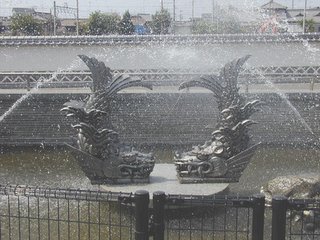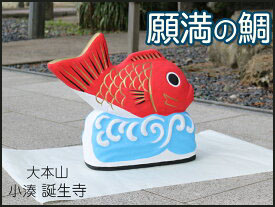::::::::::::::::::::::::::::::::::::::::::::::::::::::::::::::::::::::::::::::::::::::::::::::::::::
Seafood in Spring : FISH
***** Location: Japan
***** Season: Spring
***** Category: Animal / Humanity
*****************************
Explanation
The word FISH (sakana 魚 ) just like that is not a kigo.
I will make a list here of the fish that appear in the Japanese Saijiki. Worldwide fish are listed separate. Since most fish end up at the table, they are now included in the WASHOKU part of the World Kigo Database.
Please add your fish haiku, haiga and info
in the comments to this BLOG.

fish under water -
the illusion of words
we think we know
http://happyhaiku.blogspot.com/2005/05/illusions-with-fish.html
© Gabi Greve
. Toys and Amulets with FISH .
::::::::::::::::::::::::::::::::::::::::::::::::::::::::::::::::::::::::::::::::::::::::::::::::::::

quote
The Art of Slicing Fish and Fowl in Medieval Japan
By Xenia Heinickel
Introduction:
In Western eyes, the delicately cut piece of food is often regarded as central to traditional Japanese cooking. The skilful use of the knife is indeed one of the most prominent features of the Japanese kitchen, and mastery of various cutting-techniques is a matter of course to the Japanese chef as well as to the ambitious homemaker. However, the origins of this focus on the knife as the most favored kitchen tool are not well understood. The search for these origins leads us back many a century to the world of classical and medieval Japan and to one of the least known of the Japanese arts:, the art of slicing the meats of fish and fowl.
The first traces of this art are to be found in the classical or Heian period (794-1185 CE). Heian Japan was a large aristocractic-bureaucratic state in which the court nobles held an unrivalled position as the political and cultural leaders. The core and center of their world was the capital Heiankyo (modern Kyoto), where the Emperor’s court and other spacious residences were situated There the nobles led leisurely lives, with their days dedicated to the refinement of various arts, aesthetic ideas, and pastimes, one of which was cooking.
source : www.medievalists.net
:::::::::::::::::::::::::::::::::::::::::::::::::::::::::::::::::::::::::::::::::::::::::::::::::::
Early Spring
whitebait / icefish, shirauo 白魚
Salanx microdon shira-uo
:::::::::::::::::::::::::::::::::::::::::::::::::::::::::::::::::::::::::::::::::::::::::::::::::::
Mid-Spring
Fugu, globefish, pufferfish at spring equinox, higan fugu
Tetraodon pardalis
彼岸河豚 (ひがんふぐ)
Nagoya fugu 名古屋河豚(なごやふぐ)
"rape seed globefish", natane fugu 菜種河豚 (なたねふぐ)
kigo for late spring
:::::::::::::::::::::::::::::::::::::::::::::::::::::::::::::::::::::::::::::::::::::::::::::::::::::
Haze, goby with roe, komochi haze 子持鯊 (こもちはぜ)
gobi of spring, haru no haze 春の鯊(はるのはぜ)
Yamame variety, trout-salmon, yukishiro yamame
雪代山女 (ゆきしろやまめ)
yukishiro iwana 雪代岩魚(ゆきしろいわな)
yukishiro masu 雪代鱒(ゆきしろます)
:::::::::::::::::::::::::::::::::::::::::::::::::::::::::::::::::::::::::::::::::::::::::::::::::::
Late Spring
Ayu variety, young sweetfish, junge Forelle, waka-ayu 若鮎
Plecoglossus altivelia
small sweetfish, ko-ayu 小鮎
baby sweetefish, ayu no ko 鮎の子
sweetfish swimming upstream, nobori-ayu 上り鮎
:::::::::::::::::::::::::::::::::::::::::::::::::::::::::::::::::::::::::::::::::::::::::::::::::::
. buna densetsu 鮒 伝説 crucian carp - all kigo and legends .
Buna variety, first crucian carp, hatsubuna, hatsu buna
初鮒 (はつぶな )
nokkomi buna 乗込鮒 (のっこみぶな)
pregnant crucian carp, komochi buna 子持鮒 (こもちぶな)
crucian carp in spring, haru no funa 春の鮒(はるのふな)
fishing crucian carp in spring, harubuna tsuri
春鮒釣(はるぶなつり)
"young carps leaving the nest", funa no subanare
鮒の巣離れ (ふなのすばなれ)
funa no sudachi 鮒の巣立(ふなのすだち)
kigo for mid-spring
. Kibuna, ki-buna 黄鮒 / 黄ぶな yellow crucian carp amulet .
:::::::::::::::::::::::::::::::::::::::::::::::::::::::::::::::::::::::::::::::::::::::::::::::::::::
Crappie (Pomoxis), North America
:::::::::::::::::::::::::::::::::::::::::::::::::::::::::::::::::::::::::::::::::::::::::::::::::::::
Gonzui, striped eel catfish, 権 瑞(ごんずい)
barbel eel
gigi ぎぎ, guguぐぐ
ギギ: bagrid catfish, forktail bullhead, Pelteobagrus nudiceps
:::::::::::::::::::::::::::::::::::::::::::::::::::::::::::::::::::::::::::::::::::::::::::::::::::::
Hanaika, hana ika, hana-ika 花烏賊 blossom cuttlefish,
blossom squid. BLOSSOM here refers to the cherry blossoms.
sakura-ika 桜烏賊
kooika, koo ika, koo-ika 甲烏賊
Sepia esculenta
„Kirschblüten-Tintenfisch“
Nishin, Herring 鰊
Hering, zubereitet auch Rollmops
Speciality of Fukushima
Higai fish 鰉 (ひがい)
sakurabae さくらばえ, hoyaru ほやる
Leuciscus variegatus
:::::::::::::::::::::::::::::::::::::::::::::::::::::::::::::::::::::::::::::::::::::::::::::::::::::
Masu, trout, masu 鱒 (ます)
Salmo milktschitsch
benimasu 紅鱒(べにます), umimasu 海鱒(うみます)
Karafuto masu 樺太鱒(からふとます)from Hokkaido
"real trout", honmasu 本鱒(ほんます)
"cherry trout", sakuramasu 桜鱒(さくらます)
masunosuke ますのすけ 鱒之介
"camel trout" rakuda masu 駱駝鱒(らくだます)
seppari masu 背張鱒(せっぱります)
fishing for trout, masutsuri 鱒釣り(ますつり)
trout coming upstream, masu noboru鱒上る(ますのぼる)
Lachsforelle
Mutsugoroo, a type of haze, mudskipper
むつ五郎 (むつごろう)
むつ五郎, ムツゴロウ 睦五郎)
Boleophthalmus pectinirostris
He lives in the mud of flatlands, especially in the Ariakekai Ariake sea of Kyushu.
mutsu むつ, hon mutsu 本むつ(ほんむつ)
digging for mutsugoro, mutsu horu 鯥掘る(むつほる)
mutsu kake 鯥掛け(むつかけ)
mutsu is flying, mutsu tobu むつ飛ぶ(むつとぶ)
net to catch mutsugoro, mutsubikiami
鯥曳網(むつびきあみ)
..... mutsubukuro ami 鯥袋網(むつぶくろあみ)
. . . Mutsugoro dishes from Saga prefecture and Haiku
Schlammspringer
. . . CLICK here for Photos !
:::::::::::::::::::::::::::::::::::::::::::::::::::::::::::::::::::::::::::::::::::::::::::::::::::::
Sakuradai, red sea bream, 桜鯛
Sparus species and sometimes also applied to "red snapper" Lutianus species.
Literally the name means "Cherry Blossom Bream", because of the delicate pink meat.
During the Flower viewing season, they are called
Cherry blossom-viewing sea bream, hanamidai 花見鯛
Traditional Folk Toys : all sorts of Sea Bream dolls
.................................................................................

Sawara, spanish mackerel, 鰆
Scomberomorus niphonius
This one even carries the SPRING 春 in the Chinese character, composed of fish and spring.
..... 馬鮫魚(さわら), sagoshi 狭腰(さごし), imesawara いぬさわら, taiwan sawara たいわんさわら
oki sawara 沖鰆(おきさわら)
fish for catching sawara, sawarabune 鰆船(さわらぶね)
net for catching sawara, sawara ami 鰆網(さわらあみ)
japanische Makrele
prepared as
鰆のお造り sashimi
鰆のたたき tataki like katsuo
鰆の味噌たたき tataki with miso
鰆の幽庵焼き yuuanyaki grilled with yuzu
鰆の味噌漬け pickled in Kyoto miso
鰆の字大きく書きてバスガイド
sawara no ji ookiku kaite basugaido
the character for SAWARA
is written so big
by the bus guide
Fujio Yuge 藤尾ゆげ
(Haiku Weekly)
.................................................................................
Smelt, Osmerus mordaxAmerica, kyuuri uo (Japan)
:::::::::::::::::::::::::::::::::::::::::::::::::::::::::::::::::::::::::::::::::::::::::::::::::::::

by Oohno Bakufuu 大野麦風 Ono Bakufu, Ohno Bakufu
Ugui Japanese dace, sakura ugui 桜鰔 (さくらうぐい, 桜石斑魚)
hana ugui 花うぐい(はなうぐい)
"red fish", akauo赤魚(あかうお)
"red stomach", akappara 赤っ腹(あかっぱら)
white mullet, Tribolodon hakonensis
. . . CLICK here for Photos !
. . . . . . . . . . another name is
hae 鮠(はえ), yanagi hae 柳鮠 (やなぎはえ ), haya はや
:::::::::::::::::::::::::::::::::::::::::::::::::::::::::::::::::::::::::::::::::::::::::::::::::::::
Uojima, "fish island" 魚島 (うおじま)
great numbers of pregnant fish coming near the shores in late spring, often followed by sea birds going for a bite.
time for "fish islands", uojimadoki 魚島時(うおじまどき)
:::::::::::::::::::::::::::::::::::::::::::::::::::::::::::::::::::::::::::::::::::::::::::::::::::::
:::::::::::::::::::::::::::::::::::::::::::::::::::::::::::::::::::::::::::::::::::::::::::::::::::
All Spring
Cod as dried cod (hidara) 干鱈 ひだら
hoshidara 乾鱈(ほしだら)
boodara, slices of dried cod 棒鱈(ぼうだら)
imoboo芋棒(いもぼう)"potato stick", Kyoyo fish soup
tara tenbu 鱈田夫(たらでんぶ, 鱈田麩)
dried and then roasted cod pieces
greenling,ainame 鮎魚女 (あいなめ, 鮎並)
fat greenling, aburame あぶらめ、aburako あぶらこ
Hexagrammos otakii
"horse fish", umauo, uma-uo 馬魚 (うまうお)
watako 黄鯛魚 (わたこ), wataka わたか,wadaka わだか
fish of the koi carp family
meji, small tuna, young tuna めじ
komeji 小めじ(こめじ), meji maguro めじまぐろ
KIGO with maguro 鮪 tuna
.......................................................................
moroko fish, 諸子 (もろこ) - minnows or fry - Karpfenarten
This refers to a group of small fish or individual fish types which live in rivers and lakes. They are scooped with a net and grilled or prepared in vinegar.
moroko uo 諸子魚(もろこうお) Gnathopogon elongatus
hatsu moroko 初諸子 first Moroko
tamoroko, ta moroko 田諸子 (type of carp, about 10 cm long)
yanagi moroko 柳もろこ(やなぎもろこ)
moroko hae 諸子鮠(もろこはえ)
hon moroko 本もろこ(ほんもろこ)
Honmoroko (Gnathopogon caerulescens)
Honmoroko from Lake Biwa is eaten in Kyoto as a very expensive fish. Now farmers in Tottori are growing it in old rice paddies and sell it to Kyoto, since the one's living in Lake Biwako are overpowered by foreign fish types, like Bass.
moroko umani もろこ旨煮 sweet stew of moroko carp (from Shiga prefecture)
shishamo 柳葉魚 a Shishamo smelt (susam in the Ainu language)
モロコ属やイトモロコ属, at least seven types like
タモロコ・ヒナモロコ・カワバタモロコ・デメモロコな
- and
moroko (Kue=Ara) クエの老成魚の異名: Kelp Bass, Kelp Grouper, Saladfish, Niphon spinosus
Inahata Teiko lists the moroko (minnow) as a speciality for March.
Half of the minnows
within this sunlit shallow
are not really there.
James Hackett -- The Zen Haiku and other Zen Poems

湖やもろこ釣る日の薄曇り
ko ya moroko tsuru hi no usugumori
this lake - fishing
for minnows on a slightly
cloudy day
. 正岡子規 「寒山落木」Masaoka Shiki .
志賀山の花や流れて初もろこ
松瀬青々 「妻木」
二三尾のあちこちすなる諸子かな
日野草城 「青芝」
焼諸子ことに頭の香ばしき
長谷川櫂 「果実」
- reference source : kigosai -
.......................................................................
pond swelt, wakasagi 公魚 (わかさぎ)
suzume uo 鰙雀魚(すずめうお)
sakura uo 桜魚(さくらうお)
chika, ちか ... amasagi あまさぎ
der Stint
rock fish , mebaru 眼張 めばる, mebare メバレ
black rock fish, kuro meabru, kuromebaru 黒めばる(くろめばる)
red rodk fish, aka mebaru, akamebaru 赤めばる(あかめばる)
gold rock fish, kinbebaru 金めばる(きんめばる)
. . . CLICK here for Photos !
Felsfisch, Sebastes
sardines of spring, haru iwashi 春鰯 (はるいわし)
ooba iwashi 大羽鰯(おおばいわし)
***** Iwashi sardines 鰯 (いわし) KIGO and FOOD
snipe fish, sayori さより
..... "bamboo fish" sayori 竹魚(さより)
"needle fish" hari-o 針魚(はりお), sayori 水針魚(さより)
sayori 細魚(さより)
boat for catching sayori, sayoribune 鱵舟(さよりぶね)
. . . CLICK here for Photos !
sand lance, ikanago 玉筋魚 (いかなご)
sand eel, Ammodytes personatus
koonago こうなご, kamasugo かますご
kamasujako かますじゃこ,
shiwa ikanago しわ鮊子(しわいかなご)
boat for fishing ikanago, ikanagobune
いかなご舟(いかなごぶね)
drying ikanago, ikanago hosu 鮊子干す(いかなごほす)
. . . CLICK here for Photos !
Ikanago no Kugini is a famous tsukudani dish from Hyogo. The fish are only about 2 cm long.
:::::::::::::::::::::::::::::::::::::::::::::::::::::::::::::::::::::::::::::::::::::::::::::::::::::
Toyama squid, firefly squid, hotaru ika 富山蛍烏賊
sparkling enope squid
. . . CLICK here for Photos !
hana-ika 花烏賊 (はないか), sakura ika 桜烏賊(さくらいか), koo ika 甲烏賊(こういか) ma ika, ma-ika 真烏賊(まいか)
octopus in spring, iidako 飯蛸 (いいだこ)
kigo for early spring
ishidako いしだこ, iidako 望潮魚(いいだこ)
Takasago iidako 高砂飯蛸(たかさごいいだこ)
*****************************
Worldwide use
FISH ... WORLDWIDE Saijiki
:::::::::::::::::::::::::::::::::::::::::::::::::::::::::::::::::::::::::::::::::::::::::::::::::::::
Snapper in Australia (Pagrus auratus)
Fish Kigo from Russia
*****************************
Things found on the way
俳句・魚の歳時記
園部 雨汀 著
博友社 刊
ISBN; 4-8268-0107-6
http://homepage2.nifty.com/ALABAMA/book/Book-150/B-108-saijiki.htm
:::::::::::::::::::::::::::::::::::::::::::::::::::::::::::::::::::::::::::::::::::::::::::::::::::::
More Fish and seafood as Food
aozakana 青魚 (あおざかな) fish with a green-blue back
(mostly makerels, saury and sardines)
hikarimono ひかりもの "shiny things"
shiromizakana 白身魚(しろみざかな) "fish with white meat,
gindara 銀鱈(ぎんだら) lingcod
ginmutsu ぎんむつ Japanese bluefish
greenling ほっけ hokke, Atka mackerel
Pleurogrammus azonus, Atkamakrele
tachi-uo 太刀魚(たちうお) tachiuo cutlass
Trichiurus lepturus auriga, Degenfisch
Fish and seafood as Spring Food
kasago かさご(笠子) rock fish, Skorpionfisch
kibinago キビナゴ(黍魚子)a member of the round herring family
*****************************
HAIKU
SEE
FISH ... WORLDWIDE Saijiki
蛸壺やはかなき夢を夏の月
takotsubo ya hakanaki yume o natsu no tsuki
octopus pots ...
ephemeral dreams
unter the summer moon
Matsuo Basho 松尾芭蕉
Heikedako, Octopus of the Heike clan
*****************************
Related words
***** Flounder, sole (karei) as food. Japan
***** Octopus (tako) Japan. Also squid (ika)
***** Carp Streamers (koinobori, Japan)
***** Mackerel Clouds (iwashigumo) Japan
***** Mermaid Parade, N.Y., USA
:::::::::::::::::::::::::::::::::::::::::::::::::::::::::::::::::::::::::::::::::::::::::::::::::::::
***** FISH ... WORLDWIDE Saijiki
***** WASHOKU : SEAFOOD
Back to the Worldkigo Index
http://worldkigodatabase.blogspot.com/
:::::::::::::::::::::::::::::::::::::::::::::::::::::::::::::::::::::::::::::::::::::::::::::::::::

































